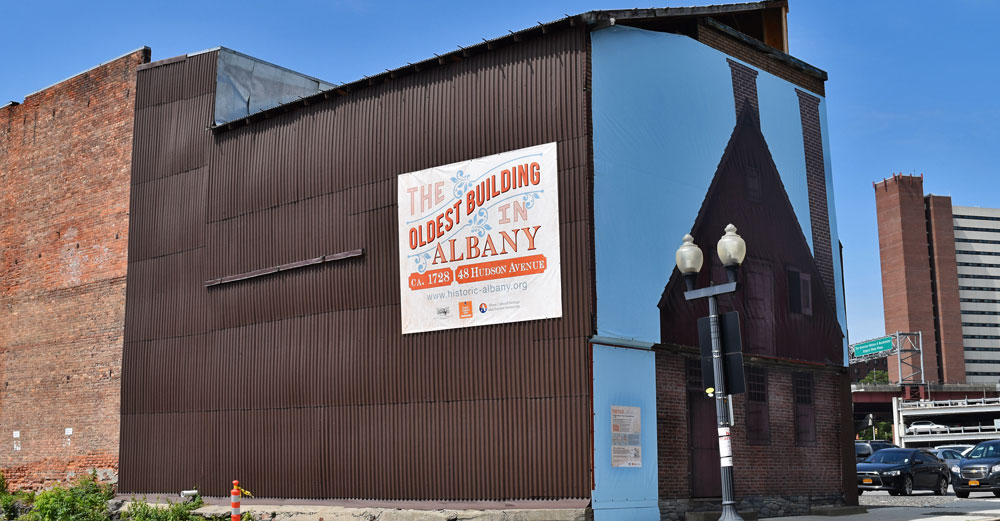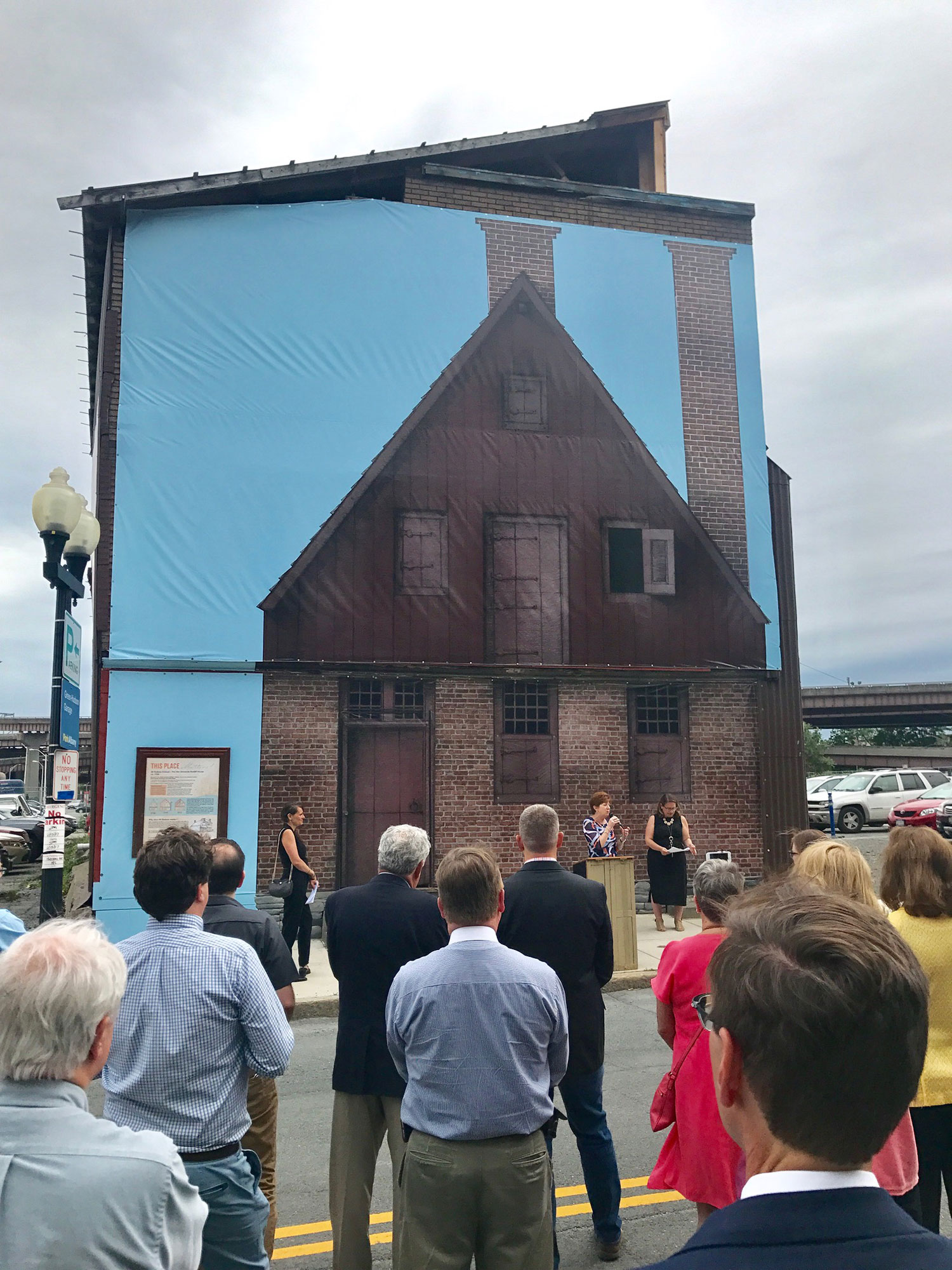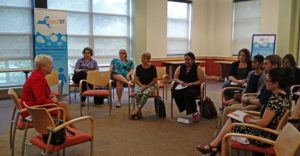
At SUNY, we take pride in our history. Our headquarters, or SUNY System Administration, has been based in New York’s capital city since the system’s founding in 1948 and moved into the historic Delaware & Hudson Railroad Building overlooking the Hudson River in 1978. The grand building, now referred to as SUNY Plaza, has been listed on the National Register of Historic Places since 1972.
But though SUNY Plaza is more than 100 years old, it’s not the first building on the site. In fact, the ground beneath SUNY headquarters was part of a bustling Dutch village established in 1614, making Albany one of the oldest continuously occupied European settlements in the United States. And Albany’s oldest remaining building, the Van Ostrande–Radliff House, built ca. 1728, is just a stone’s throw from SUNY headquarters.
When SUNY launched its new strategic plan, The Power of SUNY, in 2010, one of its six “Big Ideas” was SUNY and the Vibrant Community. This means that our system is committed to fostering vibrant communities wherever we have a presence—and downtown Albany, the neighborhood SUNY Plaza calls home, is no exception.
Jessica Fisher Neidl is senior writer and editor at System Administration, and she also serves in another capacity related to her personal interest in Albany—director of local government relations. She’s a two-time SUNY grad, with a bachelor’s in English Literature and Fine Arts and a master’s in Classical Archaeology, both from the University at Albany.
We sat down with Jess this week to talk about SUNY’s role in a new project called “This Place Matters” that just launched at Albany’s oldest building.
What is the “This Place Matters” project?
The “This Place Matters” project is a unique mix of public art, preservation advocacy, and placemaking.

The project itself includes two large, fabric “scrims.” The one bolted to the east side of the building signifies, billboard-style, that the Van Ostrande-Radliff House (commonly known as 48 Hudson Avenue) is Albany’s oldest building. The scrim on the north side depicts in real size what the building might’ve looked like when it was built, showing features typical of an urban Dutch house of that period. Things like the steeply pitched roof, casement windows, strap hinges, split door, brickwork, and the moulded anchor beam that runs across the front of the building—these all would have been characteristic of buildings here in Albany and in New York City during and even after the Dutch period…but this is the only one left.
The rendering looks really real. From a distance, you could think you’re looking at an actual Dutch building and not a drawing, which is exactly the effect we were aiming for.
What is SUNY’s role in the project?
“This Place Matters” is just one of several projects underway in Albany right now coming out of Albany’s all-volunteer Cultural Heritage & Tourism (CHAT) Partnership, which was assembled by Mayor Kathy Sheehan to tap into Albany’s culture and history to better build pride of place and economic development. I represent SUNY in the partnership because we’re a downtown neighbor and it fits in our Vibrant Communities effort, but I also do it because of my personal interest in all things Albany and love for my hometown.
I was on the small creative team that put “This Place Matters” together with the building’s owner, Historic Albany Foundation (HAF), and we’re proud to say it was made entirely by local talent—really local. The artist, graphic designer, architectural consultants, historians, even the scrim fabricators, are all based right here in downtown Albany. In fact, the graphic designer was Lee Dixon, who works his magic here at System Admin, and the artist, Mark Schaming, is a two-time SUNY alum, so we’ve got SUNY talent in this thing at the roots. The only thing we needed to go outside for was the funding to actually make and install the scrims, and we got that, happily, through a grant provided by the Dutch Consulate in New York City.
It’s the collaborative nature of the work that excites me most. And, frankly, the approach is taken straight out of Chancellor Zimpher’s collective-impact playbook. But in this case, instead of applying it to improving education outcomes, we’re applying it to positive placemaking in Albany through projects like “This Place Matters” and others. So instead of the burden for success being all on institutions you’d expect to be engaged in this kind of work, like museums or hospitality, we’re working together across sectors to lift up things that make the region and the state special.
Why is 48 Hudson Avenue important?

48 Hudson is exceptional in that is has survived all this time—290 years—and that it’s a rare, tangible link to an era of our history that’s often given short shrift in history lessons. When students are first learning about our nation’s beginnings in school, a lot of attention is paid to the Pilgrims, to what went on in New England, and then it speeds up to and through the American Revolution. But New York was different. The Dutch settled New York as a commercial enterprise, and this shaped aspects of our region’s character that can be felt even today.
Dutch society in the seventeenth century had some unique characteristics among its contemporary counterparts. Like any society, it wasn’t without its flaws, but in some ways it was also remarkably progressive. So qualities that we tend to think of as quintessentially American, and certainly as very “New York”—social mobility, the melting pot, freedom of conscience—it can be argued that they grew out of the seeds of our Dutch founding.
Under the scrim, the building looks very different from what’s depicted in the drawing. How did the design team know this is what the building looked like in 1728?
The preservation architects at John G. Waite Associates in downtown Albany and HAF who worked with us know this building intimately and specialize in Dutch buildings of this era in our region. They are able to “read” the building for clues and evidence. We also had indispensible guidance from the historical record, decades of research done by Dr. Charles Gehring and Dr. Janny Venema of the New Netherland Research Center here in Albany that has uncovered information about contemporary houses in Dutch Albany.
How long will “This Place Matters” be displayed?
The scrims are designed to last two to three years out in the elements, so we’re hoping they last that long and continue to look good through the changeable upstate New York weather and while HAF raises the necessary funds to restore the building.
The installation of the scrims was timed to be the kick off of HAF’s fundraising campaign for the building. In 2016, HAF received an Environmental Protection Fund grant from the New York State Office of Parks, Recreation and Historic Preservation for $268,032 through the Regional Economic Development Council’s Consolidated Funding Application. The grant requires matching funds, so “This Place Matters” is meant to raise awareness of the building and its importance in an effort to help with the fundraising. The six-phase restoration project is slated to cost $2 million over the next five years.
To learn more about the Van Ostrande-Radliff House at 48 Hudson Avenue visit www.historic-albany.org.





This is wonderful! And especially to this Albany State ’58er, Past President of the SUNY System University Faculty Senate(1983-87 & 1999-2001)and still active SUNY Distinguished Professor Emeritus at Alfred State!